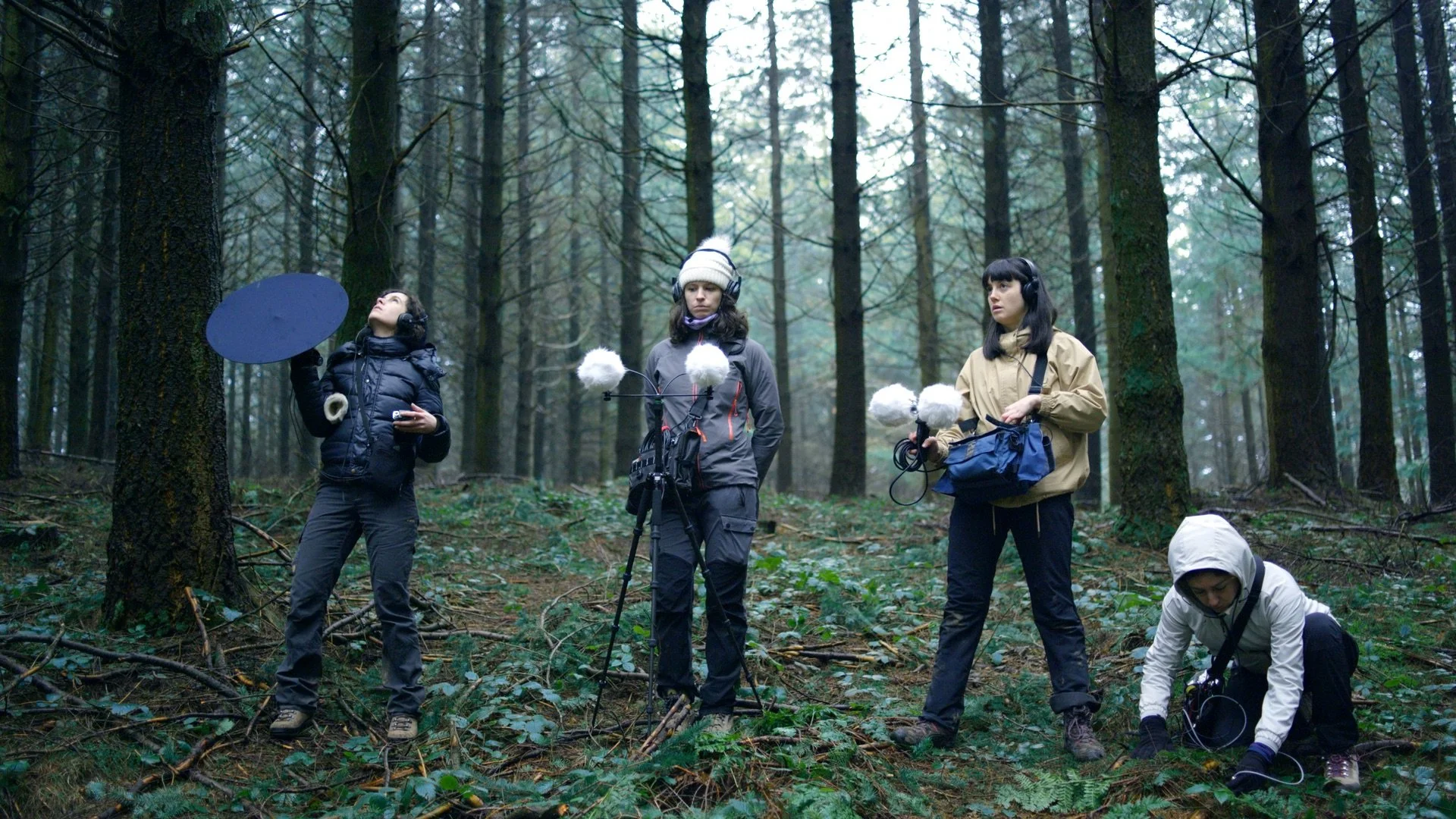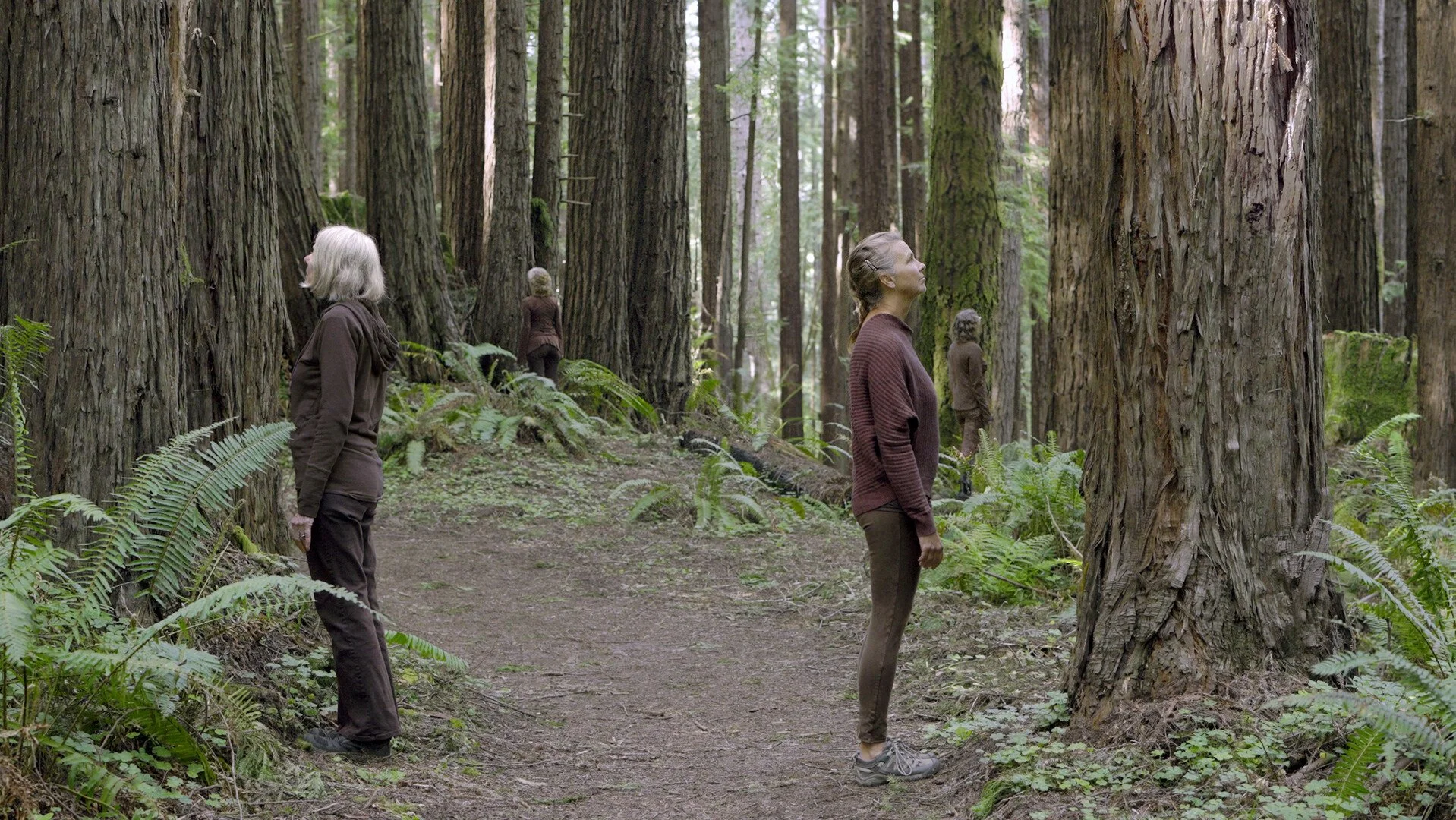Part performance film, part sonic experiment, Dear Phonocene offers a way to care for the living through sound. Set within the monoculture Douglas pine plantations near the director’s home in the Rhône, France, Roger began making field recordings a decade ago – and soon noticed an unsettling phenomenon.
“It’s strange – I’m in a forest, but it doesn’t sound like one. This contrast between the vast hectares of Douglas fir plantations and the poverty of the soundscape was the starting point. I wanted to listen to these places and understand how their acoustic ecology works. Over the years, I built a large archive of recordings from these areas, spending time contemplating and listening deeply. I discovered unexpected species appearing after clear cuts, or living in more mixed zones. But with time, many of the places where I had recorded were cut down. These clear cuts completely transformed the landscape, creating a sensation of solastalgia – when you feel you’ve lost your home even though you haven’t moved. The project began from that feeling.
Field recording is often associated with men travelling far away to capture pristine soundscapes in remote areas. I wanted to ground my practice in this post-natural landscape, and invited other women field recordists to experiment with me. Together, we performed sonic actions, imagining a sound fiction where we could reactivate the past soundscapes of this place. Inspired by recent scientific studies on acoustic enrichment showing that sound diffusion in damaged environments can help their restoration, I wanted to explore the speculative gesture. The sounds we are playing were recorded on site over several years, collected in bits of forest that have since been cut down or in unlogged areas. Here, without scientific pretension but as a poetic fiction of acoustic care, our sounds represent a certain reactivation of a past soundscape. Like a distant memory of extinct species, could these sounds perhaps have a positive impact on these places?
How to listen to this post-natural landscape? What do we take in when we take in sound? The term phonocene is directly borrowed from Donna Haraway, and taken up by Vinciane Despret to propose a philosophical concept of an era where the sonic is as important as carbon, where the future of earth depends on its acoustics.”













